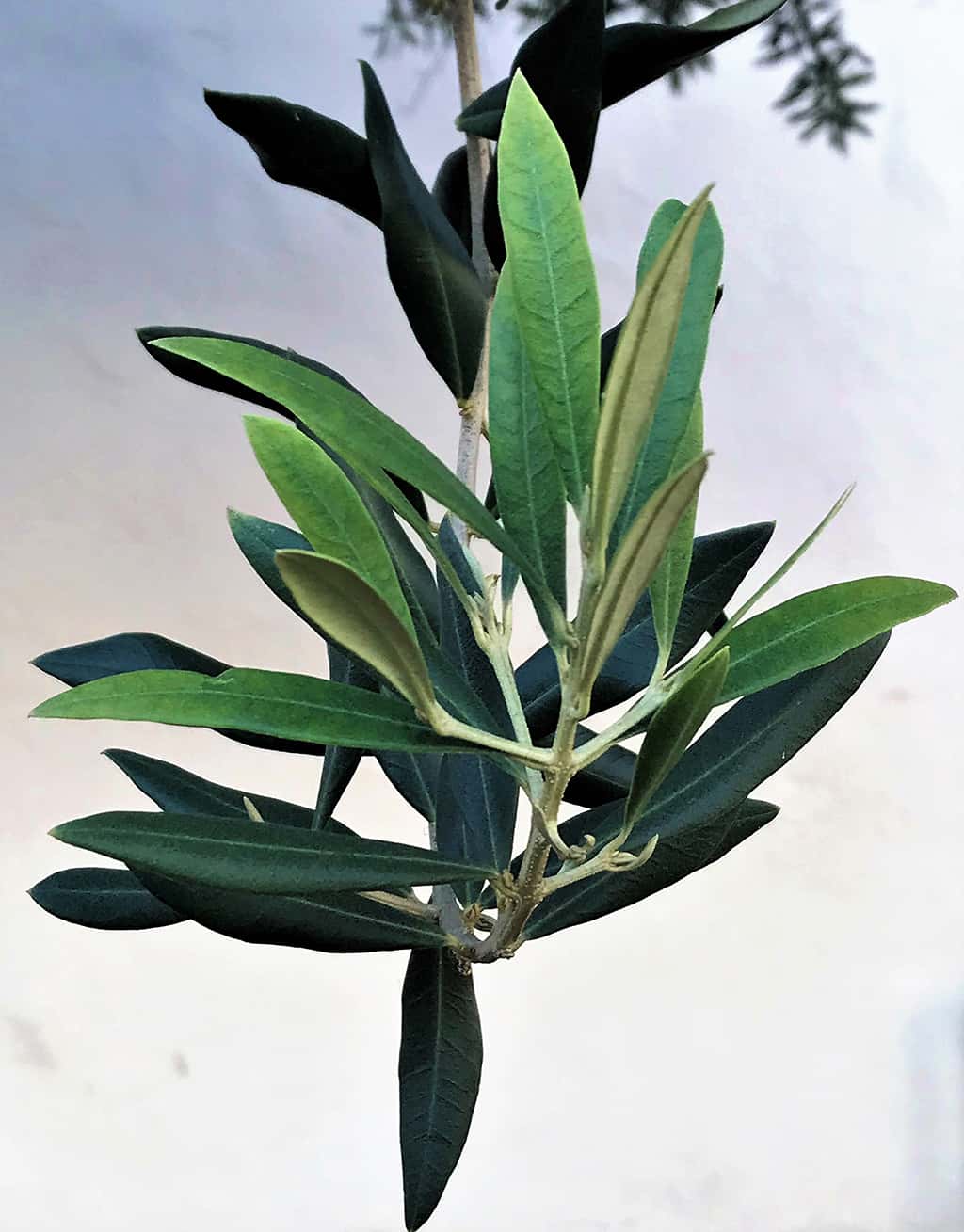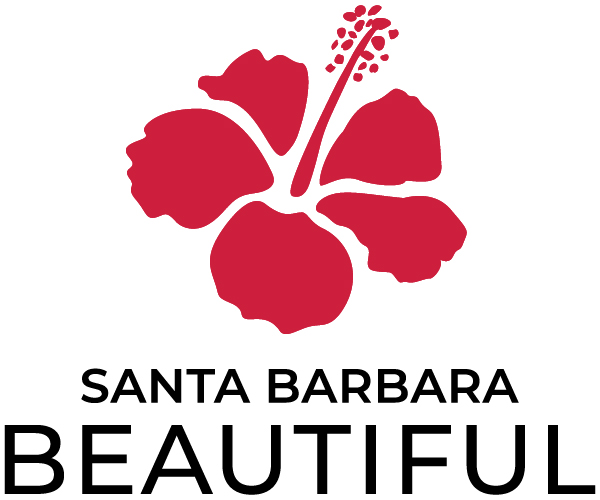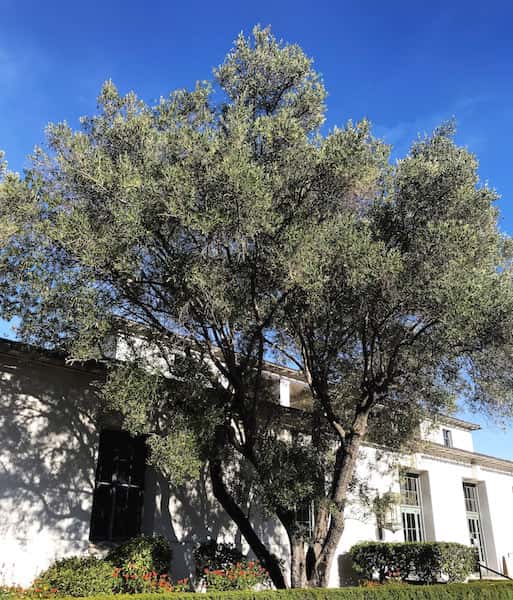Santa Barbara Beautiful Tree of the Month – February 2019

The image of a Mediterranean garden is not complete without a picturesque olive tree. This elegant tree was one of the first non-native trees to be cultivated in California. It was brought to Santa Barbara in 1786 by Franciscan padres when the Mission was established; they planted olive trees for table olives and olive oil. In fact, the street along the south side of the Mission is named “Los Olivos”.
The olive is so well suited to our local climate that Santa Barbara County was once the center of olive oil production in the U.S. Though still grown here as an agricultural crop, it is also greatly appreciated as an ornamental tree and is frequently featured in landscapes around our homes, hotels, and public buildings.
The olive is native to the Mediterranean basin, where it has been cultivated for nearly 6,000 years. It is one of the longest living trees – some trees are thought to be over 2000 years old – and some 500-year-old trees are still producing! The olive was so revered for its nutritional and health benefits (olive bark and leaves were used in traditional medicines to treat colic, eye infections, and sore throats) that it has been described in mythology and in religious ceremonies as a symbol of abundance, peace, and long life. It is now planted in all parts of the world where the climate allows.
The olive’s unique structure and contrasting gray-green foliage make it a striking focal point in the garden. Non-dwarf varieties grow as small- to medium-sized evergreen trees, reaching 20 to 35 feet tall and equally wide, with a slightly weeping growth habit. The leathery, lance-shaped leaves are 2 to 4 inches long and ¼ to ½ inches wide, gray-green to dark-green on top and silvery or yellow-brown underneath, giving the tree a distinctive grayish appearance.
Flowers appear in March through April in clusters of 15 to 20 fragrant, creamy-white blossoms, ¼ to ½ inches long. The flowers can self-fertilize, but also produce pollen that is distributed by the wind. The fruits are oval, ½ to 1 inch long, dark-brown to purple-black, with one hard seed in each. Unfortunately, without extensive spraying with insecticides, the larva of the olive fruit fly render olive fruits inedible; organic insecticides are only partially effective.
When young, the gray bark is smooth, but with age becomes cracked into small plates and can be attractively gnarled and sculptural.
The botanical name for olive is Olea europaea; Olea is the Latin word for “olive” and europaea for “European”. There are numerous subspecies and cultivated varieties that have been selected primarily for their fruit qualities, such as the familiar ‘Mission’ and ‘Manzanillo’. More recently, cultivars have been designed for ornamental landscaping purposes, such as “fruitless olives” (which essentially eliminate the mess of fallen fruit), including ‘Wilson’ and Swan Hill’, and dwarf varieties, like “Little Ollie”. The slower-growing fruitless varieties have lighter green and thinner leaves, giving them a lacy appearance overall.
Once established, olive trees are tough. They are highly drought-resistant and very tolerant of poor, infertile soils. They will grow in most soil types, provide they are given proper drainage; over watering and/or poor drainage will result in root fungus diseases. They are wonderfully low-maintenance trees which require only occasional pruning for shaping and branch structure. Plant an olive tree – or two – or three; they will provide many years of beauty, shade, and pleasure in your garden.
Olive trees can be seen throughout Santa Barbara. They stand as street trees on Olive Street, on the 200-600 blocks of De La Guerra Street, and on South Ontare Road. There is an especially beautiful olive alee along the entrance drive to the San Ysidro Ranch, underplanted with lavender bushes. Quite mature trees can be seen around the downtown main Post Office, on the front lawn of the Lobero Theater, and in Mission Park (at the west end of Alameda Padre Serra, by the Mission’s old pottery ruins).
Tree-of-the-Month articles are sponsored by Santa Barbara Beautiful, whose many missions include the increase of public awareness and appreciation of Santa Barbara’s many outstanding trees and, in a long-time partnership with the City Parks & Recreation Department, the funding and planting of trees along the City’s streets – a project which has resulted in the planting, to date, of more than 13,000 street trees.
Article and photos by David Gress


